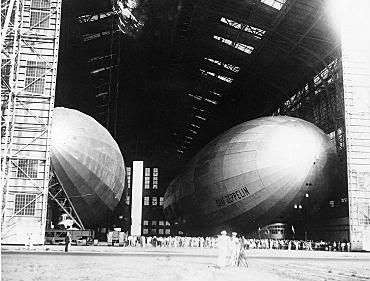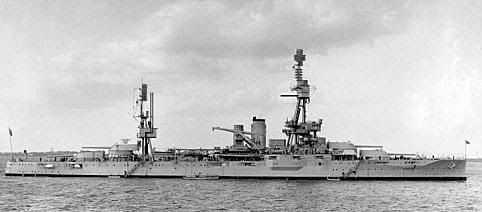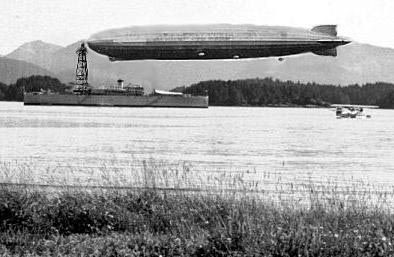June 16th, 1929
The conference on revisions to the Cleito Treaty concluded today here in Copenhagen. The conference’s main result was the introduction of Germany into the treaty system, as well as Australia. Secretary of State Hull described the talks as “complicated but not overly contentious” and Secretary of War Dern said that the changes to the treaty would have little impact of United States naval planning over the next few years. Secretary Hull praised the delegates for allowing Germany to enter the treaty framework, saying that the Weimar government has done a tremendous effort in rehabilitating world opinion of Germany in the wake of the war. “Clearly, Germany is ready to take its place in the community of peaceful nations and the United States is ready to welcome them.” There are reports that there were several meetings during the conference between German and American officials and further negotiations may occur next month in Washington when German Foreign Minister Stresseman visits as part of his planned world tour aboard the airship
Graf Zeppelin. Apparently there are hopes that the talks will lead to improved trade relations and other exchanges between the two countries. The battleship
Pennsylvania will transport the American delegation back to New York within the week.
June 29th, 1929, Lakehurst New Jersey
There was great celebration here today as the German airship
Graf Zeppelin arrived at the Naval Station after its trans-Atlantic crossing from Atlantis. Her captain for the voyage was the famed Hugo Eckener, who brought the Navy’s airship
Los Angeles across the Atlantic to Lakehurst in 1924. German Foreign Minister Gustav Stresseman was one of the ships passengers, arriving for talks in Washington as part of his round-the-world good-will tour. Secretary of State Hull met the Minister at Lakehurst before they left for Washington via rail. The airship’s voyage from Atlantis was faster than expected due to Herr Eckener’s “riding” the clockwise winds around the Bermuda High located in the central Atlantic. The
Graf Zeppelin first arrived over the U.S. at Miami and flew along the coast, over Washington, and as far as New York City before turning for Lakehurst. The airship will make a tour of the Midwest after the negotiations conclude. She is scheduled to visit the Goodyear-Zeppelin facility in Akron, and will also make a stop in Detroit at the invitation of Henry Ford, who has built a large mooring mast there. Mr. Ford and Herr Stresseman will reportedly discuss possible business ventures in Germany. Following the Midwest tour, the airship will head west towards the Navy’s airship base in California, newly renamed Hoyt Field in honor of the late Captain of the airship
Susquehanna which was lost over the Midwest last summer. Herr Eckener has said that he has little concern about the flight cross country. He stated that the
Graf Zeppelin is the strongest airship yet built and should have no difficulty with the journey.


The
Graf Zeppelin over Washington. The
Los Angeles and
Graf Zeppelin in the hanger at Lakehurst.
July 4th, 1929
The German-United States Treaty of Friendship and Cooperation was signed today in the White House by Secretary of State Cordell Hull and Foreign Minister Stresseman of Germany as President Roosevelt looked on. The treaty calls for peaceful cooperation between the two countries in economics and technological exchanges. A major aspect of the treaty calls for the United States to sell supplies of helium to Germany for use in her commercial airship program. Currently, foreign sales of helium are limited to only Atlantis under the Helium Control Act. Congress will have to amend the act to permit sales to Germany, but most observers do not believe that there will be much opposition to such a change. The United States will also reduce tariffs on German products coming into the country and Germany will do likewise. It is believed that the treaty will also provide for extensive scientific and technical cooperation between the two countries. There has been considerable interest in German technological innovations in recent years, especially in diesel engines. The treaty also provides for limited military cooperation, including exchanges between service academies. Germany is also reported to be interested in studying American practices as they relate to naval aviation and aircraft carrier design.
Reportedly, Herr Stresseman had wanted the United States to reconsider its refusal to join the League of Nations, but current popular and Congressional opinion makes that highly unlikely. After the signing ceremony, Herr Stresseman joined the President and other members of Congress and the Administration for Fourth of July celebrations, including aircraft flyovers and the evening was capped off with a tremendous fireworks display over the Washington Monument and the Mall. The German Foreign Minister will leave for a tour of the Midwest tomorrow, making stops in Akron and Detroit, before traveling to California to prepare for the trans-Pacific leg of his round-the-world tour.
July 6th, 1929
The
Graf Zeppelin arrived in Akron today for a visit by German Foreign Minister Stresseman and officials of the Zeppelin Company to the Goodyear-Zeppelin Airdock where the Navy’s airship
Akron is under construction. Talks on planned trans-Atlantic commercial services are expected. Goodyear has already made preliminary plans for a commercial version of the
Akron design. The German delegation will travel next to Detroit for meetings with Henry Ford and other industrialists.
 July 8th, 1929
July 8th, 1929
The city of Detroit came to a standstill today as the giant German airship Graf Zeppelin flew overhead before landing at Ford Airport in Dearborn. Reportedly the Germans had expressed some doubts about using the unusual mast design, which is intended to have an airship dock over one hundred feet up, at the top of the mast, then be lowered to the ground on a rail built into the tower. The German delegation then toured the Ford factory before entering a series of meetings with Henry Ford and several other industrialists in the automotive and steel industries. The
Graf Zeppelin is expected to depart for the west coast tomorrow.

July 12th, 1928
The
Graf Zeppelin landed this evening at Hoyt Field north of San Diego, completing its trans-American flight. The German airship is the first airship to dock here since the
Susquehanna left last year on its voyage to the North Pole and was lost on its return voyage over Kansas. The voyage across the desert Southwest was reported to be relatively uneventful and many passengers reported that the scenery was breathtaking at times. The airship will remain at Hoyt Field for an undetermined amount of time in preparation for its trans-Pacific flight. Herr Eckener reportedly wishes to conduct some maintenance on the engines and other areas of the ship before the long flight over the Pacific. The Navy has sent the airship tender
Wright to Samoa to act as an intermediate stop on the trip to Australia. Naval personnel will travel on the flight to help the German crew dock with the ship.

Over New Mexico
July 16th, 1929
The Battleship
Texas departed Norfolk today for sea trials after the completion of an extensive reconstruction to modernize the Navy’s oldest operational Battleship. The ship is virtually unrecognizable as her former self, with an entirely new superstructure consisting of twin tripod masts replacing her cage masts. The ship’s coal fired boilers were replaced with an oil fired system, along with new engines and fire control, as well as improvements to deck armor and torpedo protection. There is much speculation about the extensive series of aerials rising from both masts. Official Navy spokesman say it is part of a new long-range radio system. However, some naval experts think it may be some form of detection system, or possibly some sort of defensive system. Rumors have been fueled by the involvement of the eccentric scientist Nicola Tesla, who was seen frequently at the shipyard in Norfolk. During the Great War he proposed a plethora of various inventions ranging from long-range detection systems to “Death Rays”. Few took his ideas seriously at the time.

The
Texas as she left Norfolk for trials.
July 17th, 1929
In response to Germany’s request for proposals for a new tank design, the US Wheel Track Layer Corporation of Rahway, New Jersey has submitted its M1928 fast tank design. Designed by J. Walter Christie, the M1928 carries a 37mm main gun fixed forward, along with a machine gun. Christie’s unique suspension system gives the design almost unprecedented speed, over forty miles per hour on its tracks, seventy miles per hour on wheels with the tracks removed. The U.S. Army had expressed interest in the design as well, but decided not to formally evaluate the design for a variety of technical and financial reasons, though there are also reports that Christie proved very difficult to work with, often refusing to adhere to Army requirements.
 August 19th, 1929
August 19th, 1929
Several US aeronautical firms have expressed interest in the Filipino request for proposals to build a factory in the Philippines. Boeing, Martin, Douglas, Keystone, Chance Vought and Curtiss have expressed interest in the project. The newly formed Grumman company of Long Island has also expressed interest but is seen to have an outside chance, at best.
September 23rd, 1929
The Pacific Fleet is in final preparations for its South American tour prior to December’s war games in the Gulf of Mexico. The fleet is expected to leave San Pedro on October 20th and will make stops in Mexico, Peru, Chile, Argentina, and Brazil before heading for Key West. The fleet will return to the Pacific via the Panama Canal around the end of the year. Units of the Atlantic fleet are also to participate in the maneuvers, along with forces from Atlantis, Mexico and Chile. Several other nations have accepted the U.S. invitation to send observers.

 The Graf Zeppelin over Washington. The Los Angeles and Graf Zeppelin in the hanger at Lakehurst.
The Graf Zeppelin over Washington. The Los Angeles and Graf Zeppelin in the hanger at Lakehurst.





